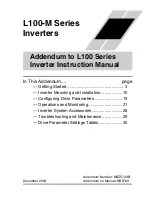
Generac Portable Products 7200 Watt Mobile Backup Power System
6
• Connect the black battery cable to the negative (–)
terminal on the battery (Figure 5).
• Connect the other end of the black cable to the engine,
not the frame (Figure 5).
CAUTION!
Be sure the BLACK cable is connected to
the engine mount and not the frame or damage to the
ground wire could occur.
BEFORE STARTING THE
ENGINE
Add Oil
CAUTION!
Any attempt to crank or start the engine
before it has been properly filled with the recommended
oil may result in an engine failure.
To fill your engine with oil:
• Place generator on a level surface.
• Follow the oil grade recommendations and oil fill
instructions given in the engine owner’s manual.
NOTE: The generator’s revolving field rides on a
prelubricated and sealed ball bearing that requires no
additional lubrication for the life of the bearing.
Add Gasoline
WARNING!
Never fill fuel tank indoors. Never
fill fuel tank when engine is running or hot. Do Not
light a cigarette or smoke when filling the fuel tank.
WARNING!
Do Not overfill the fuel tank.
Always allow room for fuel expansion.
• Use regular UNLEADED gasoline with the generator
engine. Do Not use premium gasoline. Do Not mix oil
with gasoline.
• Clean area around fuel fill cap, remove cap.
• Slowly add unleaded regular gasoline to fuel tank. Be
careful not to overfill. Allow about 1/2" of tank space for
fuel expansion (Figure 6).
• Install fuel cap and wipe up any spilled gasoline.
IMPORTANT: It is important to prevent gum deposits
from forming in essential fuel system parts, such as the
carburetor, fuel filter, fuel hose or tank during storage. Also,
experience indicates that alcohol–blended fuels (called
gasohol, ethanol or methanol) can attract moisture, which
leads to separation and formation of acids during storage.
Acidic gas can damage the fuel system of an engine while in
storage.
To avoid engine problems, the fuel system should be
emptied before storage of 30 days or longer. See “Storage”
on page 12. Never use engine or carburetor cleaner
products in the fuel tank or permanent damage may occur.
Figure 6 — Typical Fuel Expansion Space






































